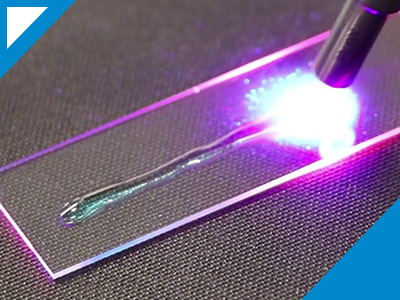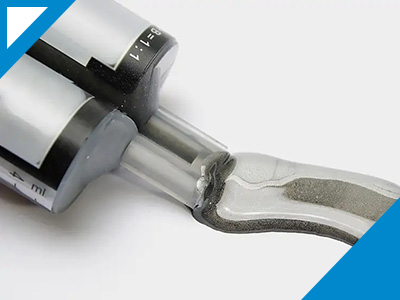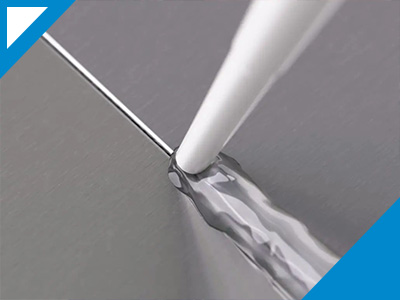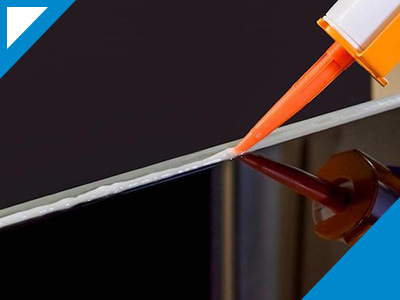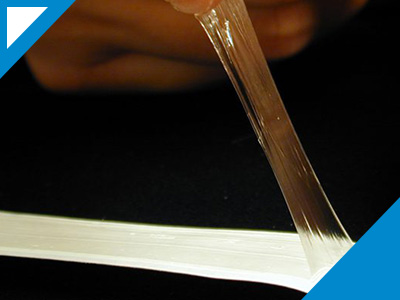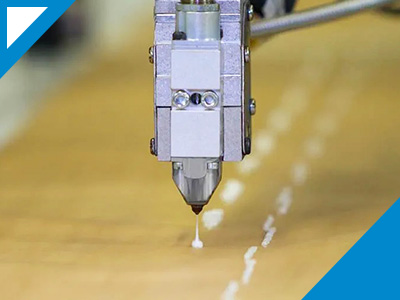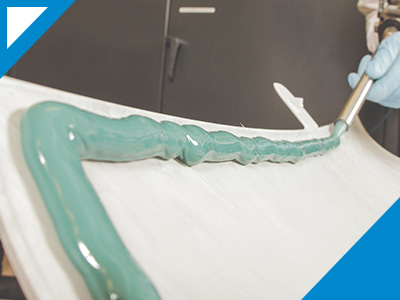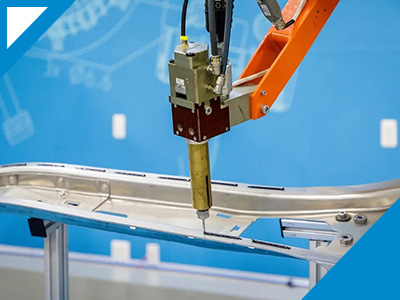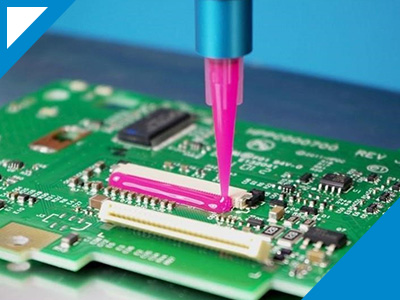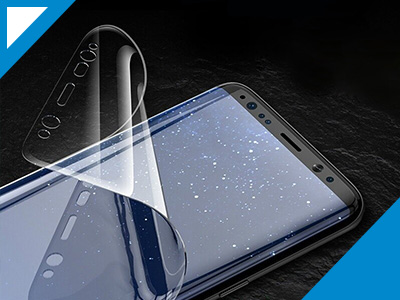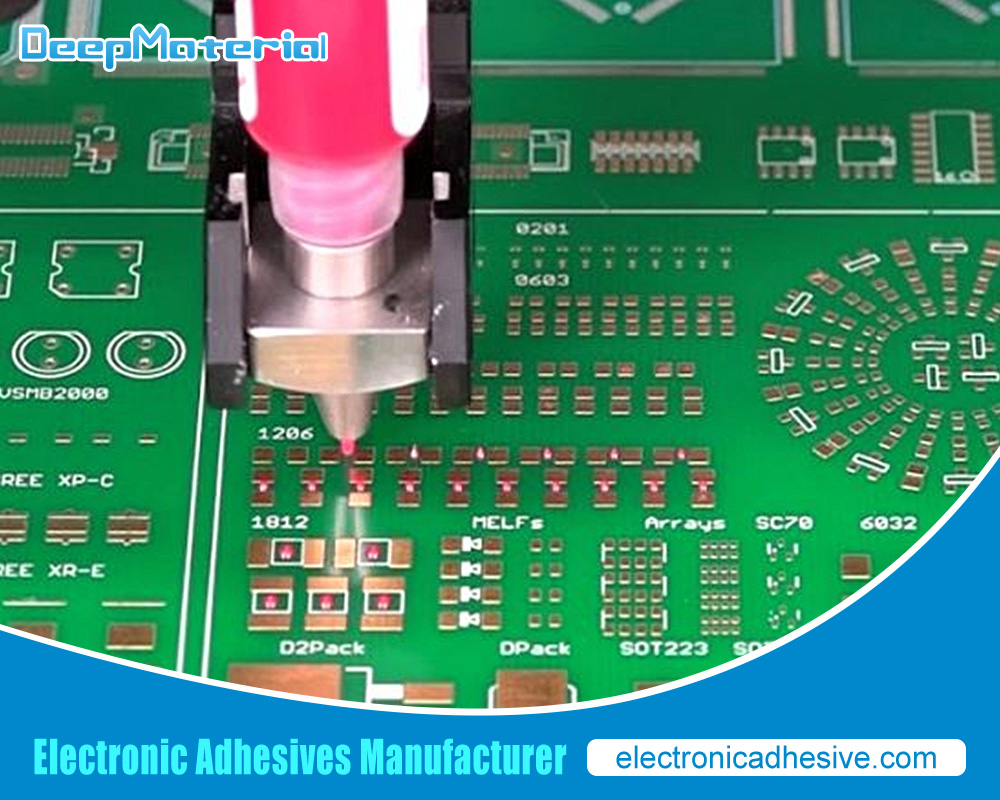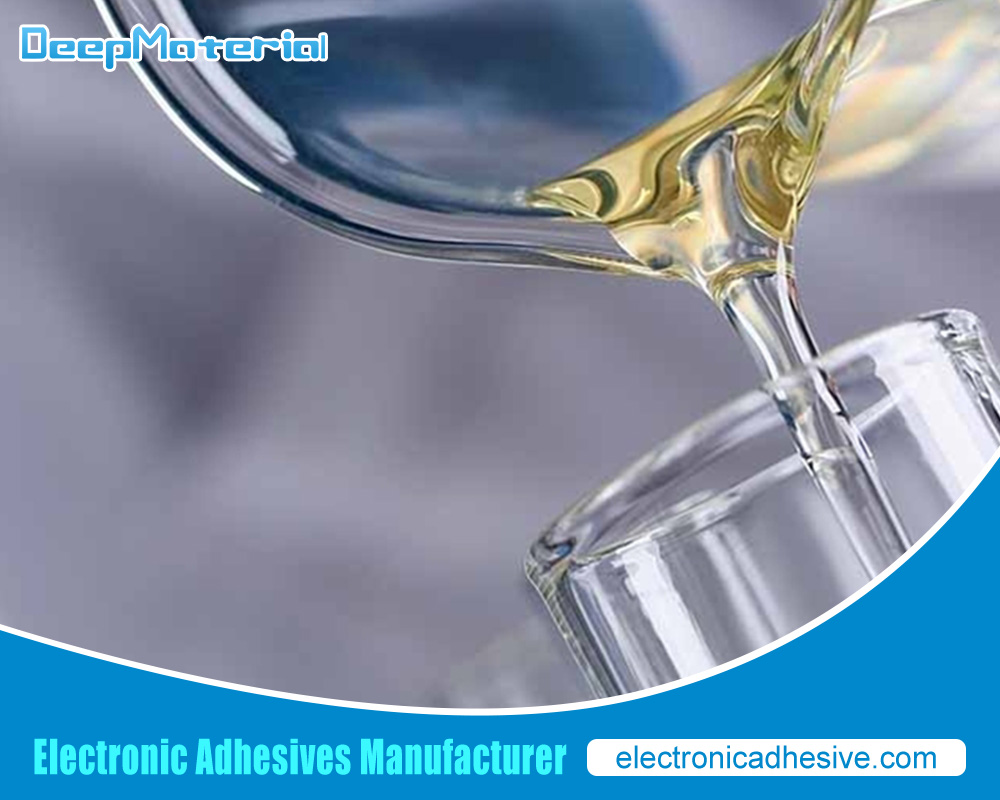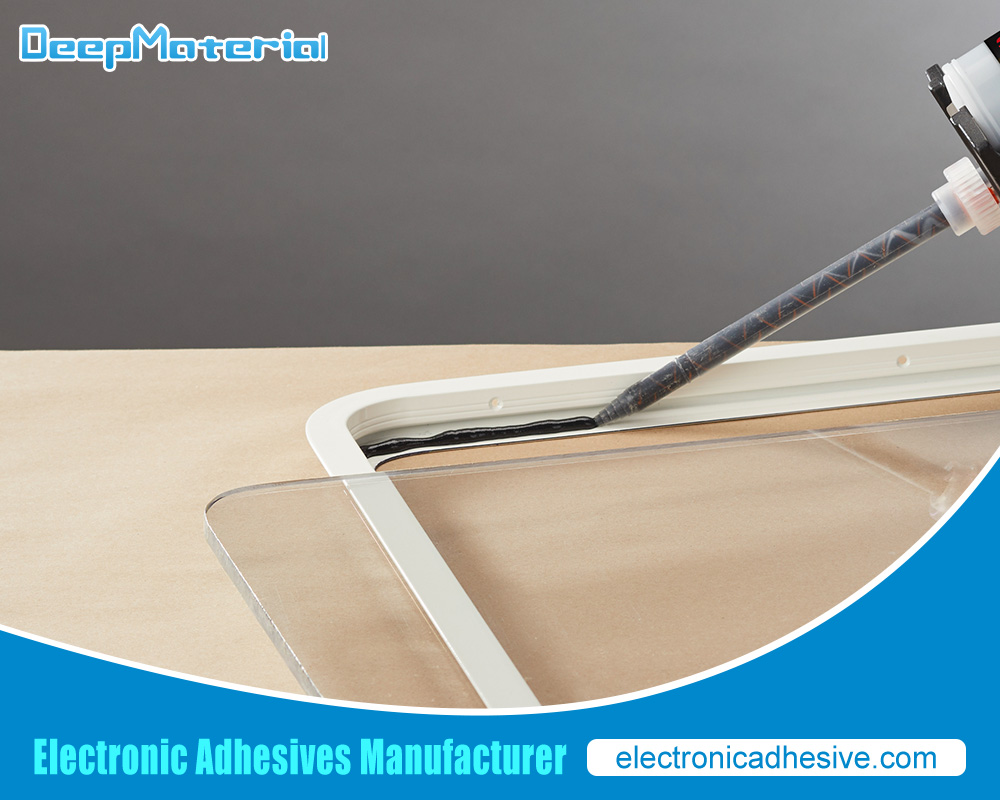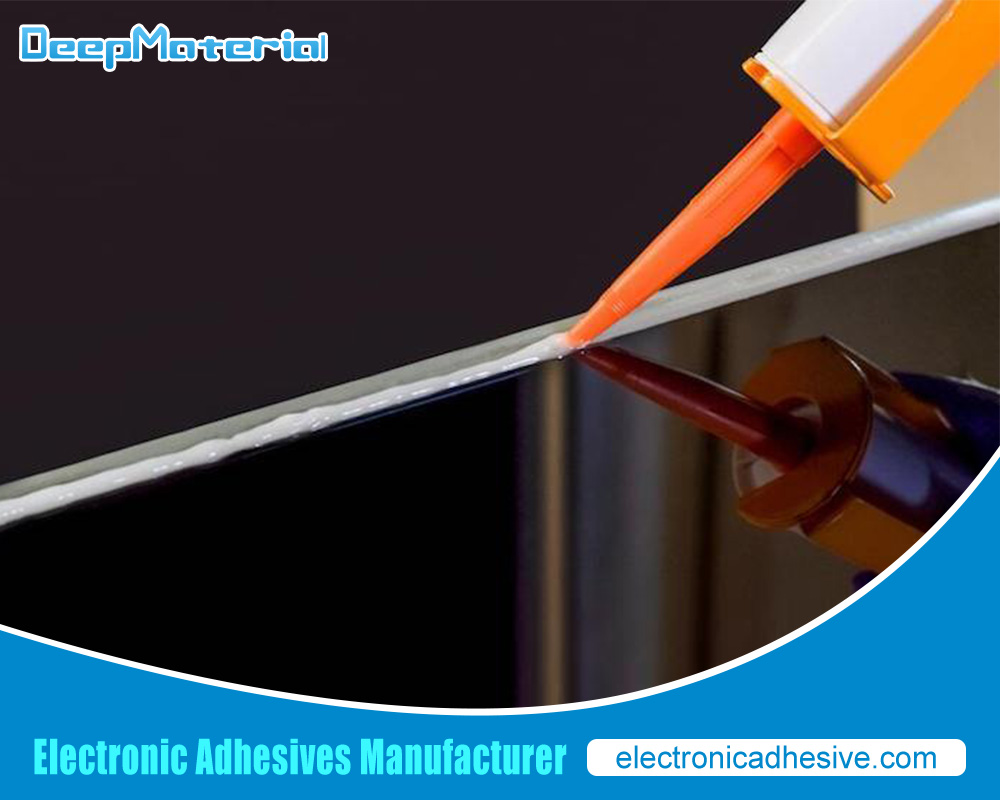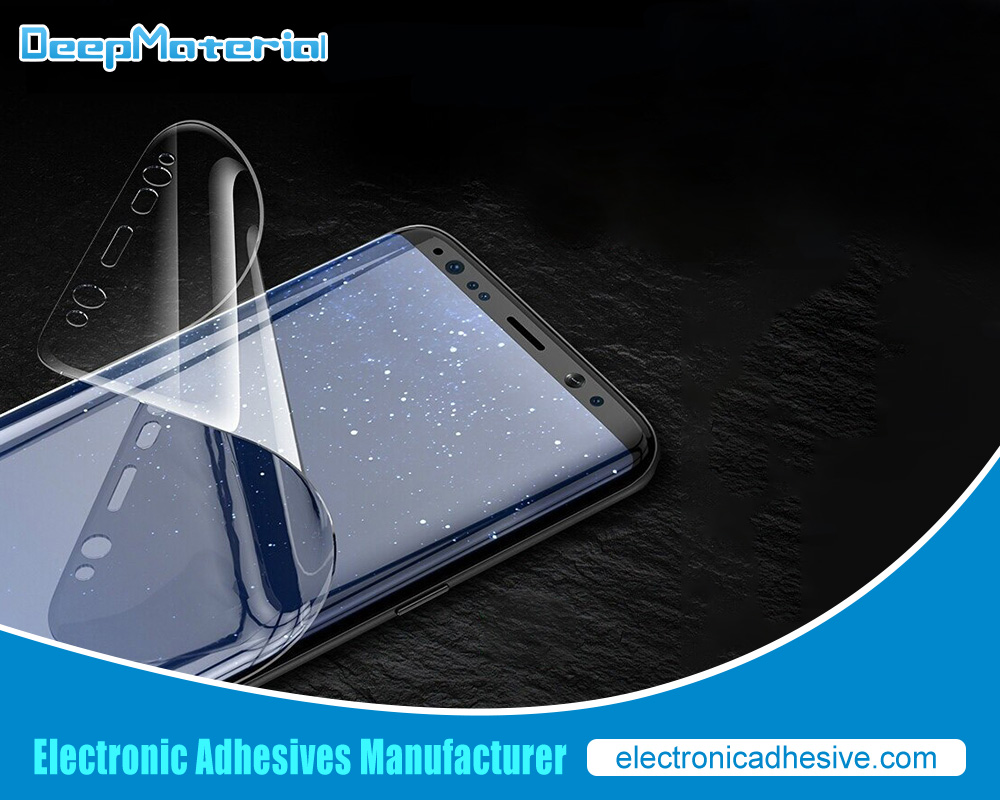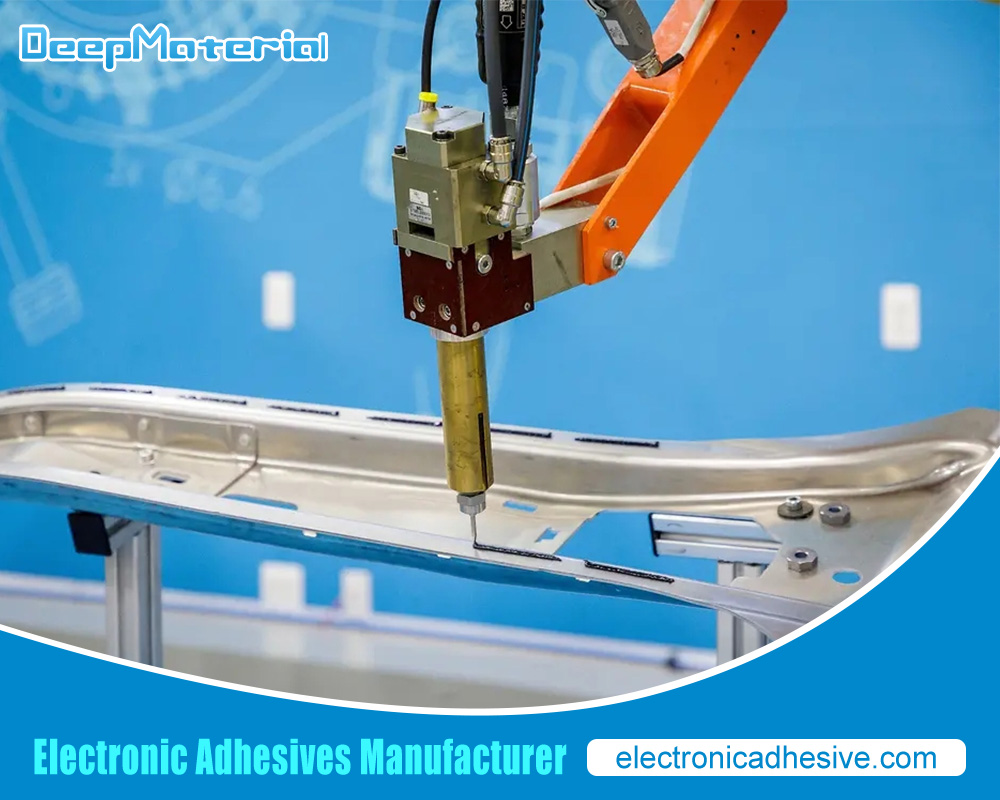Transparent Epoxy Adhesive

Transparent epoxy adhesive is a unique material that offers various applications across various industries. Its unique properties, such as excellent transparency, high strength, and exceptional bonding capabilities, make it popular for numerous bonding and sealing needs. The transparent epoxy adhesive provides a reliable solution for DIY projects, industrial manufacturing, or artistic creations. In this article, we will explore the versatility of transparent epoxy adhesive and its diverse applications.
What is Transparent Epoxy Adhesive?
Transparent epoxy adhesive is a type of adhesive that is formulated using epoxy resin as its primary component. Epoxy adhesives are known for their strong bonding capabilities and versatile applications across various industries. Transparent epoxy adhesives are designed to provide a clear and transparent bond, making them ideal for applications where aesthetics and visibility are essential.
The main ingredient in the transparent epoxy adhesive is epoxy resin, a two-part system consisting of a resin and a hardener. These two components are mixed in a specific ratio, typically 1:1, to initiate a chemical reaction that causes the adhesive to cure and form a strong bond. Heat or other catalysts can accelerate the curing process, depending on the specific formulation.
One of the critical advantages of transparent epoxy adhesive is its ability to bond with a wide range of materials, including glass, plastics, ceramics, metals, and even some composites. It offers excellent adhesion strength, durability, and resistance to moisture, chemicals, and temperature fluctuations. This makes it suitable for applications requiring a reliable and long-lasting bond.
Transparent epoxy adhesive finds extensive use in various industries and applications. In the electronics industry, it is used for bonding delicate components, sealing electronic circuits, and encapsulating sensitive devices. Its transparency ensures visibility of features while protecting environmental factors.
In the automotive industry, transparent epoxy adhesives are used for bonding glass components, such as windshields and windows, providing structural integrity and clarity. They are also employed in interior trim applications and for securing decorative elements.
Art and crafts enthusiasts utilize transparent epoxy adhesives to create resin jewelry, encapsulate objects in precise molds, and create glossy finishes on artwork. The adhesive’s transparency enhances the overall visual appeal of these creations.
Transparent epoxy adhesives are also employed in the construction and architectural sectors. They can be used for bonding glass panels, installing display cases, and securing transparent signage. The adhesive’s high strength and resistance to UV rays make it suitable for both interior and exterior applications.
When working with transparent epoxy adhesive, following the manufacturer’s instructions carefully, including the recommended surface preparation, mixing ratio, and curing conditions, is essential. Proper ventilation and protective equipment, such as gloves and goggles, should be used to ensure safety.
Composition and Properties of Transparent Epoxy Adhesive
Transparent epoxy adhesive is a type of adhesive that is widely used for bonding and joining various materials. It is known for its excellent transparency and strong bonding properties. This adhesive comprises two main components: epoxy resin and a hardener. When these components are mixed, a chemical reaction occurs, forming a solid and durable bond.
Epoxy resin, which serves as the base of the adhesive, is a thermosetting polymer derived from a class of synthetic resins known as epoxides. It is a high-viscosity liquid that is typically clear or amber in color. Epoxy resins are known for their excellent adhesion to various surfaces, including metals, ceramics, glass, and plastics. They also have good chemical resistance, mechanical strength, and electrical insulating properties.
The hardener, usually a curing agent, is added to the epoxy resin in a specific ratio to initiate the curing process. The curing process involves the chemical reaction between the epoxy resin and the hardener, forming a three-dimensional cross-linked network. This network structure is responsible for the adhesive’s strength and durability.
Transparent epoxy adhesives offer fundamental properties that make them desirable for various applications. Firstly, their transparency allows for optically clear bonds, making them ideal for applications where aesthetics or optical properties are essential, such as glass bonding or optical devices. The adhesive does not obstruct or distort light, ensuring high transparency.
Additionally, transparent epoxy adhesives exhibit excellent adhesion to various substrates, including plastics, metals, and ceramics. They can create strong and durable bonds even in demanding environments. This adhesive is also resistant to moisture, chemicals, and temperature variations, providing reliable performance in harsh conditions.
Another essential property of transparent epoxy adhesives is their low shrinkage during curing. This low shrinkage helps to minimize stress on the bonded surfaces, reducing the risk of distortion or damage. It also allows for precise and accurate bonding of delicate or intricate components.
Furthermore, transparent epoxy adhesives can have a wide range of curing times, from fast-curing formulations for rapid assembly processes to slow-curing options for more complex applications that require extended working times.
Transparent Epoxy Adhesive vs. Traditional Adhesives
Transparent epoxy adhesive is a type of adhesive that offers several advantages over traditional adhesives. It is a versatile and robust bonding agent commonly used in various applications requiring transparency and high strength. Unlike conventional adhesives, transparent epoxy adhesive has distinct characteristics, making it a preferred choice for many industries.
One of the critical benefits of transparent epoxy adhesive is its ability to provide a crystal-clear bond. Unlike traditional adhesives that may dry with a yellowish or hazy appearance, transparent epoxy adhesive cures to form a translucent bond. This feature makes it ideal for applications where aesthetics are essential, such as bonding glass, plastics, or decorative elements. It allows for a seamless and visually appealing result without compromising the structural integrity of the bond.
Another advantage of transparent epoxy adhesive is its exceptional strength. It offers high bonding strength, which makes it suitable for applications that require secure and long-lasting adhesion. Traditional bonds may sometimes provide a different level of durability and strength, particularly when exposed to harsh conditions, temperature variations, or moisture. On the other hand, transparent epoxy adhesive maintains its strength and stability even under challenging environmental circumstances.
Additionally, the transparent epoxy adhesive has excellent chemical resistance and can withstand exposure to various chemicals, including solvents, acids, and bases. This property makes it highly suitable for applications in electronics, automotive, and manufacturing industries, where components may come into contact with various chemicals during their lifespan. Traditional adhesives may not offer the same level of chemical resistance, which can lead to deterioration or weakening of the bond over time.
Furthermore, the transparent epoxy adhesive provides excellent gap-filling capabilities. It can be used to bond uneven or irregular surfaces effectively, and this feature is particularly advantageous in applications involving tight tolerances or odd shapes. Traditional adhesives may need help to fill gaps and adhere to uneven surfaces, which can compromise the integrity of the bond. Transparent epoxy adhesive ensures a strong and uniform bond, even in challenging bonding situations.
Bonding Strength and Durability
Bonding strength and durability are essential in various fields, including construction, manufacturing, and engineering, and they are crucial in determining the reliability and longevity of bonded materials and structures. Let’s explore these concepts in more detail.
Bonding strength refers to the ability of an adhesive or bonding agent to hold two or more materials together under applied loads or forces. It measures the resistance to separation or failure at the bond interface. The bonding strength depends on several factors, such as the type of adhesive, surface preparation, curing conditions, and the bonded materials.
Different adhesives exhibit varying levels of bonding strength. For example, epoxy adhesives are renowned for their exceptional bonding strength, providing high levels of adhesion to various materials, including metals, composites, and plastics. Other types of adhesives, such as cyanoacrylates and polyurethanes, also offer considerable bonding strength. The strength of the bond is typically quantified using metrics like tensile strength, shear strength, or peel strength.
Durability, on the other hand, refers to the ability of a bonded joint to withstand environmental conditions and maintain its performance over an extended period. It involves resistance to moisture, temperature variations, chemical exposure, and mechanical stress. A durable bond retains strength, integrity, and functionality over time without significant degradation or failure.
To enhance durability, several factors must be considered. Proper surface preparation is crucial to remove contaminants, improve adhesion, and maximize the bonding area. Adequate curing and drying times ensure the adhesive reaches its full strength and develops the desired properties. Moreover, selecting a sealant compatible with the bonded materials and the anticipated operating conditions is vital for long-term durability.
Transparent Epoxy Adhesive in DIY Crafts and Repairs
Transparent epoxy adhesive is a versatile and popular tool used in various do-it-yourself (DIY) crafts and repairs. Its ability to bond different materials and create a robust and precise bond makes it an ideal choice for many applications. Whether working on a small art project or fixing broken items around the house, the transparent epoxy adhesive can be a valuable addition to your toolkit.
One of the primary uses of transparent epoxy adhesive is in DIY crafts. It can create jewelry, ornaments, and other decorative items. Its translucent nature allows for a seamless finish, making it ideal for bonding glass, ceramics, or even plastic pieces together. With epoxy adhesive, you can transform ordinary materials into unique, personalized creations.
In addition to crafts, transparent epoxy adhesive is commonly used for repairs. It can fix broken items such as glassware, ceramics, and plastics. The adhesive forms a strong bond that can withstand stress and temperature variations, making it a reliable choice for repairing items that require durability. Whether mending a cracked vase or fixing a broken figurine, the epoxy adhesive can help restore the item’s functionality and appearance.
One of the critical advantages of transparent epoxy adhesive is its ease of use. Most epoxy adhesives come in two parts—a resin and a hardener—which must be mixed before application. Once mixed, the bond typically has a workable time of several minutes, allowing you to position the pieces accurately. After that, the epoxy cures and hardens over a few hours, resulting in a robust and transparent bond.
When using transparent epoxy adhesive, following the manufacturer’s instructions is essential. It is recommended to clean and prepare the surfaces to be bonded, ensuring they are free from dust, grease, or other contaminants. Applying a thin and even layer of epoxy adhesive to both surfaces will help create a strong bond, and clamping the pieces together during curing can further enhance the bond strength.
However, it’s important to note that epoxy adhesives may not be suitable for all materials. They may not adhere well to certain plastics, metals, or fabrics with low surface energy. Therefore, it’s advisable to test the adhesive on a small, inconspicuous area before applying it to the entire project or repair.

Applications in Industrial Manufacturing
Transparent epoxy adhesives find various applications in industrial manufacturing due to their excellent bonding strength, optical clarity, and resistance to environmental factors. Here are some typical applications of transparent epoxy adhesive in industrial manufacturing:
- Electronics Assembly: Transparent epoxy adhesives are widely used to assemble electronic components, such as the bonding of display screens, touch panels, and optical devices. These adhesives provide a robust, transparent bond, ensuring optimal visual performance and mechanical stability.
- Optical Bonding: Transparent epoxy adhesives are used for bonding optical components, such as lenses, prisms, filters, and mirrors. They offer excellent light transmission properties and can withstand environmental factors like temperature changes and humidity, ensuring long-term optical performance.
- Glass Bonding: Transparent epoxy adhesives are used for bonding glass components in various applications, such as glass furniture, glass display cases, and glass panels for electronics. They provide a clear and durable bond, maintaining the aesthetics and structural integrity of the assembled parts.
- Automotive Industry: Transparent epoxy adhesives find applications in the automotive industry for bonding glass parts, such as windshields, windows, and sunroofs. These adhesives offer high strength, impact resistance, and weathering properties, ensuring safe and reliable bonding in automotive assemblies.
- Jewelry and Crafts: Transparent epoxy adhesives are used in the production of jewelry and crafts, where they provide a strong bond for attaching gemstones, beads, and other decorative elements. The transparency of the adhesive ensures that the bond does not interfere with the aesthetics of the final product.
- Medical Devices: Transparent epoxy adhesives manufacture medical devices, such as diagnostic equipment, sensors, and laboratory instruments. These adhesives offer biocompatibility, sterilization resistance, and optical clarity, meeting the stringent requirements of the medical industry.
- Display Manufacturing: Transparent epoxy adhesives assemble displays, including LCDs, OLEDs, and touchscreens. They provide reliable bonding between different layers, such as glass substrates, polarizers, and electrodes, ensuring the structural integrity and performance of the display.
- Solar Panels: Transparent epoxy adhesives manufacture solar panels to bond various components, such as glass covers, photovoltaic cells, and junction boxes. These adhesives offer long-term adhesion, UV resistance, and protection against environmental factors, enhancing the durability of solar panels.
It’s important to note that the specific application and adhesive requirements may vary depending on the industry, product, and manufacturing process. Therefore, it’s advisable to consult adhesive manufacturers or industry experts for guidance on selecting the most suitable transparent epoxy adhesive for a particular application.
Transparent Epoxy Adhesive for Glass Bonding
Transparent epoxy adhesive is a versatile and reliable solution for bonding glass materials. Glass bonding requires a strong adhesive that not only provides a secure bond but also maintains the transparency of the glass. Epoxy adhesives are known for their excellent bonding properties and are widely used in various automotive, construction, and electronics industries. Here, we will explore the features, benefits, and considerations of a transparent epoxy adhesive for glass bonding.
Transparent epoxy adhesives are specifically formulated to create an evident bond that seamlessly merges with the glass surface. They offer high optical clarity, allowing light to pass without significant distortion or haziness. This makes them ideal for applications where aesthetics and visual appearance are crucial, such as in producing display screens, optical lenses, and decorative glass items.
One of the critical advantages of transparent epoxy adhesive is its exceptional bonding strength. It forms a durable and resilient bond that can withstand various environmental factors, including temperature fluctuations, humidity, and exposure to UV light. This ensures the long-term stability and reliability of the bonded glass components.
Furthermore, transparent epoxy adhesives exhibit excellent chemical resistance, essential when bonding glass materials. They can withstand exposure to solvents, acids, and other harsh chemicals, preventing any damage or degradation of the bond over time.
Another significant benefit of transparent epoxy adhesive is its versatility in bonding different types of glass, including borosilicate glass, soda-lime glass, and tempered glass. It adheres well to the glass surface, creating a solid interfacial connection.
When using transparent epoxy adhesive for glass bonding, it is essential to consider certain factors. First, proper surface preparation is crucial for a strong and reliable bond. The glass surface should be clean, dry, and free from contaminants like dust, oils, or fingerprints. Thoroughly cleaning the glass with a suitable solvent and ensuring it is scorched before applying the adhesive will promote optimal adhesion.
Additionally, it is essential to follow the manufacturer’s instructions regarding the mixing ratio and curing time of the epoxy adhesive. Correctly measuring and mixing the adhesive components ensures the best performance and bond strength.
In summary, transparent epoxy adhesive is an excellent choice for bonding glass materials due to its high optical clarity, exceptional bonding strength, chemical resistance, and versatility. It provides a durable and transparent bond that can withstand various environmental conditions, making it suitable for multiple applications. However, proper surface preparation and adherence to the manufacturer’s instructions are essential for achieving optimal bonding results.
Automotive and Aerospace Industry Uses
The automotive and aerospace industries are crucial in shaping the modern world, and both sectors utilize advanced technologies, materials, and engineering principles to develop cutting-edge vehicles and aircraft.
Automotive Industry: The automotive industry is responsible for the design, development, manufacturing, and sale of motor vehicles. It encompasses many products, including cars, trucks, motorcycles, buses, and commercial vehicles. Here are some critical uses and innovations within the automotive industry:
- Transportation: The primary purpose of the automotive industry is to provide efficient and reliable transportation. Vehicles are used by individuals, families, businesses, and governments for daily commuting, travel, and transporting goods.
- Safety: Automotive manufacturers prioritize safety features to protect occupants and pedestrians. These include seat belts, airbags, anti-lock braking systems (ABS), traction control, electronic stability control (ESC), and advanced driver-assistance systems (ADAS) such as lane departure warning and automatic emergency braking.
- Environmental Sustainability: The automotive industry is actively working on reducing carbon emissions and developing alternative energy solutions. Electric vehicles (EVs) and hybrid vehicles are gaining popularity as more sustainable transportation options. Manufacturers are investing in battery technology advancements and charging infrastructure.
- Connectivity: Modern vehicles are increasingly connected to the internet, enabling features such as GPS navigation, entertainment systems, and remote vehicle management. Connected cars also support vehicle-to-vehicle (V2V) and vehicle-to-infrastructure (V2I) communication, enhancing road safety and traffic management.
- Autonomous Vehicles: The automotive industry is at the forefront of developing self-driving vehicles. Autonomous technology aims to improve road safety, increase transportation efficiency, and provide mobility solutions for individuals with disabilities or limited mobility.
Aerospace Industry: The aerospace industry deals with the design, development, manufacturing, and operation of aircraft and spacecraft, encompassing civil and military applications. Here are some practical uses and advancements within the aerospace industry:
- Air Travel: The aerospace industry revolutionized air travel, enabling fast and efficient transportation across the globe. Commercial aircraft are used for passenger and cargo transportation, connecting people and goods internationally.
- Defense and Military Applications: The aerospace industry is instrumental in developing military aircraft, helicopters, drones, missiles, and other defense systems. These technologies are used for reconnaissance, surveillance, combat operations, and national security.
- Space Exploration: Aerospace plays a pivotal role in space exploration missions. Governments and private companies collaborate to design and build spacecraft for satellite deployment, lunar and planetary exploration, and scientific research. Notable examples include NASA’s Mars rovers and SpaceX’s Falcon rockets.
- Communication and Satellite Systems: Satellites are crucial for global communication networks, weather forecasting, navigation systems (GPS), and Earth observation. The aerospace industry designs manufactures, and launches satellites to enable these services.
- Research and Development: The aerospace industry drives technological advancements in materials, aerodynamics, propulsion systems, and avionics. These innovations have far-reaching impacts beyond the industry, influencing various sectors like energy, telecommunications, and environmental monitoring.
Transparent Epoxy Adhesive for Jewelry Making
Transparent epoxy adhesive is a versatile and popular choice for jewelry making due to its strong bond, clarity, and durability. Whether creating resin jewelry, securing gemstones, or attaching metal components, a reliable and high-quality epoxy adhesive can bring your designs to life. Here are some key features and benefits of a transparent epoxy adhesive for jewelry making.
- Bonding Strength: Transparent epoxy adhesives offer excellent bonding strength, ensuring your jewelry components stay securely in place. They create a solid, durable bond that can withstand daily wear and tear, preventing your jewelry pieces from falling apart quickly.
- Clarity: One of the most significant advantages of transparent epoxy adhesive is its clarity. When cured, it dries to a crystal-clear finish, allowing the beauty and details of your jewelry components to shine through. This is particularly beneficial when working with transparent or translucent materials like glass, gemstones, or resin.
- Versatility: Transparent epoxy adhesive can be used for various jewelry-making applications. It can bond multiple materials, including metals (such as gold, silver, or brass), gemstones, glass, ceramic, wood, and more. Its versatility makes it a go-to adhesive for jewelry makers with different design preferences.
- Quick Curing Time: Epoxy adhesives typically have a fast curing time, allowing you to complete your jewelry projects efficiently. Depending on the product, the curing time can range from a few minutes to several hours. Following the manufacturer’s instructions regarding curing time and any additional considerations, such as temperature and humidity, is essential.
- Resistance to Yellowing: Transparent epoxy adhesives explicitly designed for jewelry making are often formulated to resist yellowing over time. This is crucial to maintaining your jewelry pieces’ clarity and aesthetic appeal, ensuring they retain their original beauty for years.
- Ease of Use: Most transparent epoxy adhesives come in two-part formulas: resin and hardener. To use the adhesive, mix the two components in the recommended ratio and apply the mixture to the surfaces you want to bond. The adhesive typically has a relatively low viscosity, allowing it to spread evenly and adhere to intricate details and minor components.
- Long-Term Durability: Jewelry items, especially those worn frequently, must withstand daily use without compromising integrity. Transparent epoxy adhesive offers excellent long-term durability, providing a reliable bond that can withstand exposure to water, temperature fluctuations, and everyday activities.
When using transparent epoxy adhesive for jewelry making, it’s essential to follow safety precautions, such as wearing gloves, working in a well-ventilated area, and reading and following the manufacturer’s instructions. Additionally, it’s advisable to test the adhesive on a small, inconspicuous area before applying it to your final jewelry piece to ensure compatibility with your materials.

Medical and Dental Applications
Transparent epoxy adhesive is a versatile and valuable material that finds applications beyond jewelry making. In the medical and dental fields, transparent epoxy adhesive is used for various purposes thanks to its unique properties. Here are some key considerations and applications of transparent epoxy adhesive in medical and dental settings:
- Biocompatibility: Transparent epoxy adhesives used in medical and dental applications are formulated to be biocompatible, meaning they are safe for use in contact with living tissues and fluids. These adhesives undergo rigorous testing to ensure they do not cause adverse reactions or harm to patients.
- Bonding and Sealing: Epoxy adhesives offer excellent bonding and sealing properties, making them suitable for medical and dental applications that require robust and reliable adhesion. They can bond or seal various materials, including metal, ceramic, plastic, and fabric.
- Medical Device Assembly: Transparent epoxy adhesives are commonly used to assemble medical devices. They provide secure bonding of components, such as plastic housings, metal parts, electronic components, and sensors. The adhesive ensures the device remains structurally sound and functional throughout its intended use.
- Dental Restorations: In dentistry, transparent epoxy adhesives play a crucial role in dental restorations, such as bonding dental crowns, bridges, and veneers. They provide a strong bond between the restoration and the tooth structure, ensuring stability and longevity of the dental work. Additionally, transparent epoxy adhesives can be used for direct dental composites, which are tooth-colored fillings that require strong adhesion to the natural tooth.
- Prosthetics and Orthotics: Transparent epoxy adhesives fabricate prosthetic limbs and orthotic devices. They help bond various materials, such as carbon fiber, metals, and plastics, to create durable and functional prosthetics or orthotic components.
- Wound Closure: Epoxy adhesives with appropriate biocompatibility and adhesive properties can be used in specific wound closure applications. These adhesives provide a non-invasive alternative to sutures or staples and can help facilitate wound healing.
- Medical Research and Lab Applications: Transparent epoxy adhesives are utilized in various medical research and laboratory applications. They can bond microscope slides, secure delicate specimens or components, and seal microfluidic devices or chambers.
It is important to note that the specific epoxy adhesive formulation and its compliance with regulatory standards, such as ISO 10993 for biocompatibility, play a crucial role in determining the suitability of the adhesive for medical and dental applications. Manufacturers often provide documentation and certifications regarding their epoxy adhesives’ biocompatibility and performance characteristics, enabling healthcare professionals to make informed choices.
Electrical and Electronics Industry Applications
The electrical and electronics industry relies heavily on various materials and technologies to design and manufacture different products. Transparent epoxy adhesive is a material that finds practical applications in this industry. Here are some critical applications of transparent epoxy adhesive in the electrical and electronics sector:
- Bonding and Encapsulation: Transparent epoxy adhesive is widely used for bonding and encapsulating electronic components. It provides excellent adhesion to various materials, including metals, plastics, and ceramics. Features such as integrated circuits (ICs), transistors, resistors, capacitors, and sensors can be securely bonded to circuit boards or encapsulated within transparent epoxy for protection against moisture, dust, and mechanical stress.
- Printed Circuit Board (PCB) Assembly: Transparent epoxy adhesive plays a vital role in PCB assembly. It is used for bonding surface-mount devices (SMDs) onto PCBs, providing electrical connectivity and mechanical stability. Epoxy adhesives also help protect the solder joints and components from vibration and environmental factors.
- Wire Tacking and Insulation: Transparent epoxy adhesive is commonly employed for wire tacking and insulation in the electrical industry. It securely holds wires in place on PCBs, preventing movement or damage due to mechanical stress. Epoxy adhesives also provide electrical insulation and protect the wire connections from environmental factors.
- Potting and Sealing: Transparent epoxy adhesive is excellent for potting and sealing electronic components and assemblies. Potting involves filling a cavity or enclosure with epoxy to protect against moisture, shock, and vibration. This technique is commonly used in power supplies, LED lighting, sensors, and other electronic devices. Epoxy sealing ensures that delicate electronic components are shielded from external elements.
- Optical Device Assembly: Transparent epoxy adhesive assembles optical devices such as lenses, prisms, and fiber optics. It provides excellent adhesion and visual clarity, ensuring the components remain securely bonded while maintaining the desired optical properties.
- Display and Touchscreen Assembly: Transparent epoxy adhesive is crucial for assembling displays and touchscreens in electronic devices. It securely bonds the various layers of the display stack-up, including the glass substrate, touch sensor, and other components. Epoxy adhesives used in these applications are typically optically clear to maintain the transparency and functionality of the display.
- Semiconductor Packaging: Transparent epoxy adhesive is widely used in the packaging of semiconductors. It helps protect delicate semiconductor chips by encapsulating them within a transparent epoxy resin, ensuring mechanical and environmental stability.
Transparent epoxy adhesive offers excellent electrical insulation, thermal stability, and mechanical strength, making it a preferred choice for various applications in the electrical and electronics industry. Its ability to provide reliable bonding, encapsulation, potting, and sealing properties helps enhance electronic devices and components’ performance, reliability, and longevity.
Transparent Epoxy Adhesive for Woodworking
The electrical and electronics industry relies heavily on various materials and technologies to design and manufacture different products. Transparent epoxy adhesive is a material that finds practical applications in this industry. Here are some critical applications of transparent epoxy adhesive in the electrical and electronics sector:
- Bonding and Encapsulation: Transparent epoxy adhesive is widely used for bonding and encapsulating electronic components. It provides excellent adhesion to various materials, including metals, plastics, and ceramics. Features such as integrated circuits (ICs), transistors, resistors, capacitors, and sensors can be securely bonded to circuit boards or encapsulated within transparent epoxy for protection against moisture, dust, and mechanical stress.
- Printed Circuit Board (PCB) Assembly: Transparent epoxy adhesive plays a vital role in PCB assembly. It is used for bonding surface-mount devices (SMDs) onto PCBs, providing electrical connectivity and mechanical stability. Epoxy adhesives also help protect the solder joints and components from vibration and environmental factors.
- Wire Tacking and Insulation: Transparent epoxy adhesive is commonly employed for wire tacking and insulation in the electrical industry. It securely holds wires in place on PCBs, preventing movement or damage due to mechanical stress. Epoxy adhesives also provide electrical insulation and protect the wire connections from environmental factors.
- Potting and Sealing: Transparent epoxy adhesive is excellent for potting and sealing electronic components and assemblies. Potting involves filling a cavity or enclosure with epoxy to protect against moisture, shock, and vibration. This technique is commonly used in power supplies, LED lighting, sensors, and other electronic devices. Epoxy sealing ensures that delicate electronic components are shielded from external elements.
- Optical Device Assembly: Transparent epoxy adhesive assembles optical devices such as lenses, prisms, and fiber optics. It provides excellent adhesion and visual clarity, ensuring the components remain securely bonded while maintaining the desired optical properties.
- Display and Touchscreen Assembly: Transparent epoxy adhesive is crucial for assembling displays and touchscreens in electronic devices. It securely bonds the various layers of the display stack-up, including the glass substrate, touch sensor, and other components. Epoxy adhesives used in these applications are typically optically clear to maintain the transparency and functionality of the display.
- Semiconductor Packaging: Transparent epoxy adhesive is widely used in the packaging of semiconductors. It helps protect delicate semiconductor chips by encapsulating them within a transparent epoxy resin, ensuring mechanical and environmental stability.
Transparent epoxy adhesive offers excellent electrical insulation, thermal stability, and mechanical strength, making it a preferred choice for various applications in the electrical and electronics industry. Its ability to provide reliable bonding, encapsulation, potting, and sealing properties helps enhance electronic devices and components’ performance, reliability, and longevity.
Advantages in Marine and Construction Industries
Transparent epoxy adhesive offers several advantages in both the marine and construction industries, and its unique properties make it a valuable material for various applications in these sectors. Here are some critical benefits of transparent epoxy adhesive in the marine and construction industries:
Marine Industry:
- Water Resistance: Transparent epoxy adhesive is highly resistant to water and moisture. It forms a strong bond that remains intact even when exposed to harsh marine environments, including saltwater, humidity, and temperature fluctuations. This makes it suitable for bonding and sealing applications in boat construction, repair, and maintenance.
- Corrosion Protection: Epoxy adhesives can help protect metal components and structures in the marine industry from corrosion. By providing a barrier against water and other corrosive agents, transparent epoxy adhesive helps prolong the lifespan of marine equipment and structures, such as hulls, decks, and fittings.
- Bonding and Laminating: Transparent epoxy adhesive is widely used for bonding and laminating various materials in boat construction. It creates strong and durable bonds between fiberglass, wood, composites, and other materials, ensuring the structural integrity of boats and marine components.
- Moisture Barrier and Sealing: Transparent epoxy adhesive can create moisture barriers and sealants in marine applications. It effectively seals joints, gaps, and seams, preventing water ingress and protecting against leaks. This is crucial for maintaining the integrity of boat hulls, decks, windows, and other vulnerable areas.
Construction Industry:
- Structural Bonding: Transparent epoxy adhesive is used in the construction industry for structural bonding applications. It provides high strength and excellent adhesion to various building materials, such as concrete, metal, stone, and wood. This makes it ideal for joining and reinforcing structural components, such as beams, columns, and panels.
- Repair and Restoration: Epoxy adhesive is often used for repair and restoration work in construction. It can effectively bond and fill cracks, gaps, and damaged areas in concrete, masonry, and other building materials. Transparent epoxy adhesive allows for seamless repairs, restoring the integrity and aesthetics of structures.
- Flooring Applications: Transparent epoxy adhesive is popular in constructing seamless and durable flooring systems. It can bond and encapsulate flooring materials like tiles, stones, and decorative aggregates, creating a smooth and visually appealing surface. Epoxy adhesives for flooring applications also resist abrasion, chemicals, and moisture.
- Weather Resistance: Transparent epoxy adhesive offers excellent weather resistance, making it suitable for interior and exterior construction applications. It withstands UV rays, temperature variations, and moisture exposure without deteriorating or losing its adhesion properties. This durability ensures long-lasting and reliable performance in various construction projects.
- Versatility and Customization: Transparent epoxy adhesive can be easily customized by adding pigments, dyes, or fillers to achieve desired colors or effects. This versatility allows for creative design possibilities in construction, such as decorative coatings, textured surfaces, and unique finishes.
It is important to note that proper surface preparation and following the manufacturer’s instructions are crucial for achieving optimal results with transparent epoxy adhesive in both marine and construction applications. Adherence to safety guidelines and personal protective equipment is also essential.

Optical and Optical Fiber Applications
Optical and optical fiber applications rely on precise and efficient technologies to transmit and manipulate light signals. Transparent epoxy adhesive plays a crucial role in these applications due to its optical clarity, bonding capabilities, and resistance to environmental factors. Here are some critical applications of transparent epoxy adhesive in the visual and optical fiber industries:
- Fiber Optic Cable Assembly: Fiber optic cables are essential for high-speed data transmission in telecommunications, internet connectivity, and data centers. Transparent epoxy adhesive is used to assemble and terminate fiber optic connectors. It provides reliable bonding between the fiber optic components, ensuring efficient light transmission and minimal signal loss.
- Fiber Optic Splicing and Coupling: Transparent epoxy adhesive is utilized in fiber optic splicing, where individual fiber strands are fused to create a continuous transmission path. The adhesive ensures precise alignment and bonding of the fiber ends, allowing for efficient signal transmission. Epoxy adhesive is also employed in fiber optic coupling applications, where two fiber ends are aligned and bonded to enable light transfer between them.
- Fiber Optic Component Encapsulation: Optical components, such as lasers, photodetectors, and waveguides, are often encapsulated in transparent epoxy adhesive for protection and stability. The bond provides a protective coating that shields delicate optical components from environmental factors and mechanical stress while maintaining their visual performance.
- Optical Lens Bonding: Transparent epoxy adhesive is used for bonding optical lenses in various applications, including cameras, microscopes, and optical instruments. The adhesive provides secure and precise bonding, ensuring proper alignment and visual performance of the lenses. It also helps eliminate air gaps between the lens and the housing, reducing the risk of optical distortions.
- Optical Coating and Filter Assembly: Transparent epoxy adhesive is employed to assemble optical coatings and filters. It helps bond multiple layers of visual materials, such as glass or thin films, with high precision. The adhesive ensures uniformity and stability of the coatings, enhancing their optical properties and durability.
- Optoelectronic Device Assembly: Transparent epoxy adhesive plays a crucial role in the assembly of optoelectronic devices, such as LEDs, photovoltaic cells, and optical sensors. It helps bond the active components to their substrates, providing mechanical stability and electrical connectivity. The adhesive’s transparency ensures efficient light transmission and optimal device performance.
- Optical Alignment and Mounting: Transparent epoxy adhesive is utilized for precisely aligning and mounting optical components. It helps secure mirrors, prisms, and other visual elements in their correct positions, allowing for accurate light manipulation and control.
Transparent epoxy adhesive offers excellent optical properties, including high light transmittance and low refractive index, making it a reliable material for various visual and optical fiber applications. Its ability to provide robust and durable bonding, resistance to environmental factors, and optical clarity ensures optimal performance and reliability in these industries. Proper application techniques and adherence to manufacturer guidelines are essential to achieve the desired visual and optical fiber application results.
Artistic Uses of Transparent Epoxy Adhesive
Transparent epoxy adhesive is a versatile material with numerous artistic uses in various creative fields. Its unique properties, such as clarity, durability, and adhesive strength, make it a popular choice for artists looking to add a touch of innovation and aesthetic appeal to their works. Here are some creative uses of transparent epoxy adhesive:
- Resin Art: Epoxy resin art has gained significant popularity in recent years. Artists use transparent epoxy adhesive as a medium to create stunning three-dimensional artworks. Artists can produce captivating pieces with a glossy, glass-like finish by mixing pigments, dyes, or even natural materials like flowers, leaves, or shells into the epoxy.
- Jewelry Making: Transparent epoxy adhesive is commonly used in jewelry making. It can be poured into molds or bezels to encapsulate objects like gemstones, charms, or small trinkets. The epoxy not only enhances the visual appeal of the jewelry but also provides a protective layer, ensuring the piece’s longevity.
- Mixed Media Art: Artists often incorporate epoxy adhesive to add texture and depth to mixed media artworks. Artists can create visually dynamic compositions with a glossy, professional finish by layering different materials, such as paper, fabric, or metal, and sealing them with a transparent epoxy coating.
- Collage and Assemblage: Transparent epoxy adhesive can adhere and protect different elements in collage and assemblage artworks. The epoxy provides an evident, durable bond while adding a polished look to the final piece, whether it’s sticking to paper cutouts, photographs, or found objects.
- Sculpture and Installation Art: Epoxy adhesive is valuable for sculptors and installation artists. It allows them to bond various materials, such as wood, metal, or plastic, creating sturdy and long-lasting structures. The transparent nature of the epoxy can also add an interesting visual element by creating the illusion of objects floating or merging.
- Furniture and Functional Art: Transparent epoxy adhesive creates unique furniture and functional art pieces. By combining wood, acrylic, or other materials with epoxy, artists can achieve striking designs that highlight the natural beauty of the materials while providing a smooth, durable surface.
- Surface Coating and Finishing: Epoxy adhesive can be used as a clear coat to protect and enhance the appearance of paintings, tabletops, countertops, and other surfaces. Its self-leveling properties ensure a smooth, even finish, while its high-gloss appearance adds depth and brilliance to the underlying artwork.
- Decorative Objects: Transparent epoxy adhesive can create a wide range of decorative objects, such as paperweights, coasters, or ornaments. By encasing objects or designs in epoxy, artists can preserve them while transforming them into visually captivating pieces.
Transparent Epoxy Adhesive in 3D Printing
Transparent epoxy adhesive plays a crucial role in 3D printing, enabling the creation of refined and visually appealing objects. This adhesive offers a range of benefits, such as excellent bonding properties, optical clarity, and ease of use.
In 3D printing, transparent epoxy adhesive is a binding agent for various materials. It allows for the seamless joining of individual layers, ensuring structural integrity and stability in the final printed object. The adhesive’s ability to form strong bonds between different components is essential in achieving high-quality, reliable prints.
One of the critical advantages of transparent epoxy adhesive in 3D printing is its optical clarity. It possesses excellent light transmission properties, allowing printed objects to maintain their transparency. This feature is particularly beneficial when producing lenses, light guides, or transparent prototypes that require optical precision. By using a transparent adhesive, 3D printers can achieve the desired visual quality and accuracy in their prints.
Furthermore, transparent epoxy adhesive is formulated to be compatible with various printing materials commonly used in the industry. It adheres well to plastics like polycarbonate (PC), poly(methyl methacrylate) (PMMA), and other transparent thermoplastics. This versatility enables 3D printing enthusiasts and professionals to work with various materials, opening up possibilities for diverse applications.
The application of transparent epoxy adhesive in 3D printing is relatively straightforward, and it can be applied using traditional methods such as brush or nozzle dispensing. The adhesive cures at ambient temperature or can be accelerated with heat, enabling quick and efficient production. Its low viscosity ensures easy application and good wetting properties, facilitating proper adhesion between the layers.
Choosing a high-quality transparent epoxy adhesive is crucial for achieving optimal results in 3D printing. It is essential to select an adhesive that exhibits good mechanical properties, such as high strength and flexibility, to ensure the durability and longevity of the printed objects. Additionally, the bond should possess resistance to environmental factors like temperature, moisture, and UV light to maintain the integrity of the prints over time.
Food-Safe and FDA-Compliant Options
Regarding ensuring food safety and compliance with FDA regulations, several options are available to businesses and consumers. These options encompass various aspects of food handling, packaging, and storage. Here are some food-safe and FDA-compliant options to consider:
- Food-grade materials: When selecting packaging materials for food products, choosing options labeled as food-grade is essential. These materials have been tested and approved for direct contact with food, ensuring they do not pose any health risks. Common food-grade materials include high-density polyethylene (HDPE), polypropylene (PP), and polyethylene terephthalate (PET).
- Food-safe coatings: Coatings applied to food packaging can provide additional protection. Look for coatings specifically designed for food contact and approved by the FDA. These coatings can help prevent contamination, maintain product quality, and extend shelf life.
- FDA-compliant labeling: Proper labeling is essential for informing consumers about the contents of the food product and ensuring regulatory compliance. Labels should include accurate and precise information regarding ingredients, nutritional facts, allergens, and any necessary warnings or instructions. It is essential to adhere to FDA guidelines and regulations when designing and printing labels.
- Temperature control: Maintaining appropriate temperature conditions is crucial for preventing foodborne illnesses and ensuring food safety. This applies to both storage and transportation. Investing in refrigeration units, temperature-controlled packaging, and monitoring systems can help maintain the freshness and safety of perishable food items.
- Good Manufacturing Practices (GMP): Following GMP guidelines is vital for food manufacturers to ensure the production of safe and quality products. These practices include proper sanitation, employee hygiene, equipment maintenance, and documented procedures. Implementing GMP helps minimize the risk of contamination and ensures compliance with FDA regulations.
- HACCP system: Hazard Analysis and Critical Control Points (HACCP) is a systematic approach to food safety that identifies and controls potential hazards throughout the production process. Implementing a HACCP system helps food businesses proactively manage risks and ensure compliance with FDA regulations. It involves conducting hazard analysis, establishing critical control points, and implementing effective monitoring and corrective action procedures.
- Training and education: Proper training and education for employees are essential for maintaining food safety standards. This includes educating staff on proper hygiene practices, safe food handling techniques, allergen control, and following FDA regulations. Regular training sessions and ongoing education programs ensure all employees are well-informed and compliant.
- Supplier verification: When sourcing ingredients and raw materials, working with reputable suppliers who prioritize food safety is crucial. Conducting supplier audits and verifying their compliance with FDA regulations can help ensure the quality and safety of the products you receive.
Remember, staying up-to-date with the latest FDA guidelines and regulations regarding food safety and compliance is essential. The FDA’s website and other reliable sources can provide detailed information and resources to assist businesses and consumers in making informed decisions.

Challenges and Limitations of Transparent Epoxy Adhesive
Transparent epoxy adhesive is widely used in various industries for bonding and joining applications due to its excellent transparency, high strength, and versatility. However, like any other material, it has its own challenges and limitations that must be considered. Here are some key challenges and constraints associated with transparent epoxy adhesive:
- Curing time: Transparent epoxy adhesive requires a specific curing time to achieve optimum bond strength. The curing time can vary depending on factors such as temperature, humidity, and adhesive layer thickness. Longer curing times can affect production timelines and increase manufacturing costs.
- UV stability: Transparent epoxy adhesives may experience yellowing or discoloration when exposed to prolonged UV radiation. This can be a concern in applications where the adhesive is exposed to sunlight or other UV light sources. UV stabilizers or additives can minimize yellowing but may impact other adhesive properties.
- Temperature limitations: Epoxy adhesives typically have a limited temperature range to maintain performance. Excessive heat can cause the adhesive to soften, leading to bond failure, while shallow temperatures can make the adhesive brittle and reduce its strength. It is essential to consider the operating temperature range of the adhesive when selecting it for a specific application.
- Chemical resistance: While epoxy adhesives are generally resistant to a wide range of chemicals, they may not be suitable for applications where they will be exposed to certain aggressive substances or solvents. Chemical exposure can lead to adhesive degradation, compromising the bond strength. In such cases, alternative adhesive formulations or protective coatings may be required.
- Surface preparation: Achieving a solid bond with transparent epoxy adhesive often requires proper surface preparation. Surfaces must be clean, dry, and free from contaminants such as oil, grease, dust, or oxidation. Surface treatments like sanding, degreasing, or priming may be necessary to enhance adhesion. Failure to prepare the surface adequately can result in weak bonds.
- Bond line thickness: The bond strength of epoxy adhesive can be affected by the thickness of the bond line. Thin bond lines generally provide higher power compared to thicker ones. Achieving a consistently thin bond line can be challenging, especially when bonding irregular or uneven surfaces. Variations in bond line thickness can impact the overall bond strength and reliability.
- Structural limitations: While epoxy adhesives offer high strength, they may not be suitable for load-bearing or structural applications with high mechanical stress. Alternative bonding methods like mechanical fasteners or welding may be more appropriate in such cases. It is crucial to evaluate the specific mechanical requirements of the application before choosing a transparent epoxy adhesive.
Despite these challenges and limitations, transparent epoxy adhesive remains a valuable bonding solution for many applications. By carefully considering the specific requirements, conducting thorough testing, and following best practices, it is possible to leverage the benefits of transparent epoxy adhesive while mitigating its limitations.
Tips for Using Transparent Epoxy Adhesive
Transparent epoxy adhesive is widely used in various industries for bonding and joining applications due to its excellent transparency, high strength, and versatility. However, like any other material, it has its own challenges and limitations that must be considered. Here are some key challenges and constraints associated with transparent epoxy adhesive:
- Curing time: Transparent epoxy adhesive requires a specific curing time to achieve optimum bond strength. The curing time can vary depending on factors such as temperature, humidity, and adhesive layer thickness. Longer curing times can affect production timelines and increase manufacturing costs.
- UV stability: Transparent epoxy adhesives may experience yellowing or discoloration when exposed to prolonged UV radiation. This can be a concern in applications where the adhesive is exposed to sunlight or other UV light sources. UV stabilizers or additives can minimize yellowing but may impact other adhesive properties.
- Temperature limitations: Epoxy adhesives typically have a limited temperature range to maintain performance. Excessive heat can cause the adhesive to soften, leading to bond failure, while shallow temperatures can make the adhesive brittle and reduce its strength. It is essential to consider the operating temperature range of the adhesive when selecting it for a specific application.
- Chemical resistance: While epoxy adhesives are generally resistant to a wide range of chemicals, they may not be suitable for applications where they will be exposed to certain aggressive substances or solvents. Chemical exposure can lead to adhesive degradation, compromising the bond strength. In such cases, alternative adhesive formulations or protective coatings may be required.
- Surface preparation: Achieving a solid bond with transparent epoxy adhesive often requires proper surface preparation. Surfaces must be clean, dry, and free from contaminants such as oil, grease, dust, or oxidation. Surface treatments like sanding, degreasing, or priming may be necessary to enhance adhesion. Failure to prepare the surface adequately can result in weak bonds.
- Bond line thickness: The bond strength of epoxy adhesive can be affected by the thickness of the bond line. Thin bond lines generally provide higher power compared to thicker ones. Achieving a consistently thin bond line can be challenging, especially when bonding irregular or uneven surfaces. Variations in bond line thickness can impact the overall bond strength and reliability.
- Structural limitations: While epoxy adhesives offer high strength, they may not be suitable for load-bearing or structural applications with high mechanical stress. Alternative bonding methods like mechanical fasteners or welding may be more appropriate in such cases. It is crucial to evaluate the specific mechanical requirements of the application before choosing a transparent epoxy adhesive.
Despite these challenges and limitations, transparent epoxy adhesive remains a valuable bonding solution for many applications. By carefully considering the specific requirements, conducting thorough testing, and following best practices, it is possible to leverage the benefits of transparent epoxy adhesive while mitigating its limitations.
Future Innovations and Developments
The future has exciting possibilities for innovations and developments across various fields. Here are some potential areas where we can expect significant advancements:
- Artificial Intelligence (AI) and Machine Learning (ML): AI and ML technologies are poised to revolutionize numerous industries, including healthcare, transportation, finance, and manufacturing. Advancements in AI algorithms, data processing capabilities, and hardware infrastructure will lead to more intelligent and autonomous systems, personalized services, and improved decision-making processes.
- Internet of Things (IoT): The IoT will continue to grow, connecting many devices, sensors, and systems. This expansion will enable seamless communication and data exchange between devices, improving automation, enhancing efficiency, and creating new business models. The integration of IoT with AI and ML will further amplify its potential.
- 5G and Beyond: The widespread adoption of 5G networks will unlock faster data speeds, lower latency, and increased capacity. This technology will be the backbone for advancements in autonomous vehicles, smart cities, remote surgeries, virtual and augmented reality, and real-time communication. Beyond 5G, research and development efforts are underway to explore the potential of 6G networks and their applications.
- Renewable Energy Technologies: The need for sustainable and clean energy sources drives innovations in renewable energy technologies. Advancements in solar, wind, and energy storage systems will increase efficiency, reduce costs, and wider adoption of renewable energy solutions. Additionally, emerging technologies such as tidal, geothermal, and hydrogen-based systems hold promise for the future.
- Biotechnology and Healthcare: Biotechnology is advancing rapidly, enabling breakthroughs in personalized medicine, gene editing, regenerative medicine, and disease prevention. Precision medicine, enabled by genetic sequencing and AI analysis, will become more prevalent, leading to tailored treatments and improved patient outcomes. Additionally, advancements in medical devices, telemedicine, and remote monitoring will transform healthcare delivery.
- Quantum Computing: Quantum computing has the potential to revolutionize computing power and solve complex problems that are currently beyond the reach of classical computers. As research progresses, quantum computers will become more accessible, leading to cryptography, optimization, drug discovery, and materials science advancements.
- Sustainable Materials and Manufacturing: With the increasing focus on sustainability, there will be continued developments in sustainable materials and manufacturing processes. Innovations in recyclable and biodegradable materials, 3D printing, and circular economy practices will help reduce waste, energy consumption, and environmental impact.
These are just a few examples of potential future innovations and developments. The convergence of various technologies, interdisciplinary collaborations, and societal needs will drive progress and shape the world of tomorrow. It is an exciting time to witness the transformative impact of innovation in shaping our future.
Conclusion: Transparent epoxy adhesive continues revolutionizing various industries with its remarkable properties and versatile applications. Its exceptional bonding strength, durability, and transparency make it an ideal choice for many projects. From DIY crafts and repairs to industrial manufacturing, automotive, aerospace, and artistic endeavors, transparent epoxy adhesive offers reliable bonding solutions. As technology advances, we can expect further innovations and developments in this field, expanding the possibilities of transparent epoxy adhesive and its applications across various sectors.



